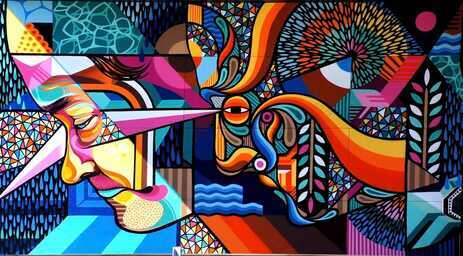Artificial Intelligence
 Artificial
ArtificialThe word artificial has its origins in Latin artifex (craftsperson, artist, master of an art; e.g., music, acting, sculpting, painting, etc): from Latin ars (art) + fex (maker), from facere (to make); literally, to make art.
Related words include Latin artificialis (of or belonging to art) and artificium (a work of art; skill; theory, system).
By the late 14th century, the English word artificial meant something not natural, not spontaneous, and, by the early 15th century, something contrived by human skill and labor. By the 16th century artificial meant anything made in imitation of, or as a substitute for, what is natural.
In the 1590s, artificial also meant full of affectation, insincere. In the 1640s, artificial also meant fictitious, assumed, not genuine, or of suspicious origins.
Intelligence
The words intelligence and intelligent have their origins in the Proto-Indo-European (PIE) root leg-(1) (to collect, gather, to speak, to pick out words) and Latin intelligere (to understand, to comprehend, to come to know) from Latin inter (between) + legere (to choose, pick out, read).
Related words include Latin intelligentem (discerning, appreciative) and intelligentia (understanding, knowledge, power of discerning; art, skill, taste).
The word intelligence came to English in the late 14th century meaning the highest faculty of the mind, the capacity for comprehending and understanding general truths.
The notion of multiple intelligences is from Howard Gardner (1983); i.e., there is more than one way to be intelligent.
In brief
The term artificial intelligence (the science and engineering of making intelligent machines) was coined in 1956. The abbreviation AI is from 1971—not to be confused with AI meaning artificial insemination, a term from 1894!
Artificial intelligence (AI) may not be ‘natural’ but it is ‘real’, like using a car rather than a horse to get from one place to another. You still get to the destination regardless of how you get there.
AI, like a car or a horse, is a way to get something done. AI is a tool to do a job. What are the jobs to be done? What do we need from AI? What do we do with what we receive from AI?
In a current magazine article, Sam Altman, CEO of OpenAI, the home of ChatGPT, was asked what future jobs might look like in the context of increasing AI applications. He replied, “he suspects that there will be a wide range of jobs for which people will always prefer a human… [Altman’s] chosen example was teachers. [In addition] he also said that we would always need people to figure out the best way to channel AI’s awesome powers. ‘That is going to be a super valuable skill,’ he said. ‘You have a computer that can do anything; what should it go and do?’” (Andersen, 2023, 63).
How do we bring our ‘intelligence’ to artificial intelligence?
Image: AI / Humans, Andrew Curry
Reference: Online Etymological Dictionary, https://www.etymonline.com/
Andersen, R. (2023, September). Inside the revolution at OpenAI. The Atlantic, 332(2), 52 – 67.
Published on September 08, 2023 15:59
No comments have been added yet.



